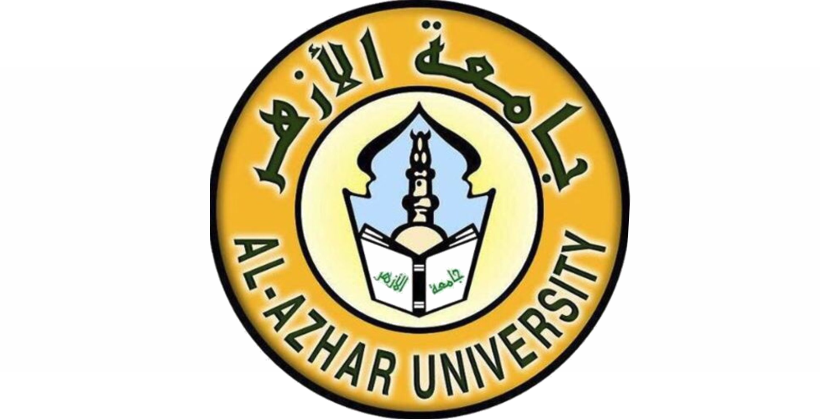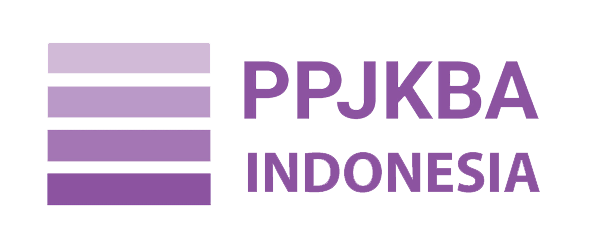Effectiveness of the Al-Miftah Lil Ulum Method in Reducing Student Boredom in Learning Arabic Grammar
DOI:
https://doi.org/10.35719/arkhas.v5i1.2262Keywords:
Al-Miftāḥ li al-‘Ulūm method, learning saturation, qawā‘id instruction, Arabic languageAbstract
This research examines the success of several students in learning Arabic qowaid (grammar) at Muqaddimatul Akhlaq Islamic Junior High School. While observing Arabic language learning activities, the researcher identified several challenges, including 1) students’ limited understanding of nahwu (Arabic syntax) rules and 2) a monotonous and unengaging learning system. The research aims to: 1) the effectiveness of the Al-Miftah Lil Ulum method in reducing student fatigue in learning Arabic qowaid and 2) whether the Al-Miftah Lil Ulum method improves students’ mastery of Arabic qowaid. This research employs a qualitative descriptive approach, specifically field research, to analyze the implementation of the Al-Miftah Lil Ulum method. Data analysis techniques include domain, taxonomic, componential, and thematic analyses. The findings indicate that implementing the Al-Miftah method at Muqaddimatul Akhlaq Islamic Junior High School has been effective and aligns with the guidelines outlined in the Al-Miftah Lil Ulum method handbook.
References
Alshahrani, K., & Qureshi, R. J. (2024). Review the Prospects and Obstacles of AI-Enhanced Learning Environments: The Role of ChatGPT in Education. International Journal of Modern Education and Computer Science, 16(4), 71–86. https://doi.org/10.5815/ijmecs.2024.04.06
Anggraeni, R. F., & Nawawi, M. (2024). Implementsi Buku Panduan Praktis Al-Imrithy Dalam Meningkatkan Pembelajaran Qowa ’ id Peserta IHFAD Pondok Pesantren Darussalam Blokagung Banyuwangi. TADRIS AL-ARABIYAT: Jurnal Kajian Ilmu Pendidikan Bahasa Arab, 4(2), 255–267.
Atika Nur Ardila Hasibuan, Nadya Kartika, Rozi Sakhbana Hasibuan, & Sikni Sari Siagian. (2023). Teori Kontekstual Sebagai Pendekatan Pembelajaran Bahasa Arab yang Menarik. Perspektif : Jurnal Pendidikan Dan Ilmu Bahasa, 2(1), 106–114. https://doi.org/10.59059/perspektif.v2i1.956
Bredtmann, J., Otten, S., & Vonnahme, C. (2021). Linguistic diversity in the classroom, student achievement, and social integration. Education Economics, 29(2), 121–142. https://doi.org/10.1080/09645292.2020.1866499
Busetto, L., Wick, W., & Gumbinger, C. (2020). How to use and assess qualitative research methods. In Neurological Research and practice. Springer. https://doi.org/10.1186/s42466-020-00059-z
Deeg, M. T., Farrand, K. M., & Oakes, W. P. (2020). Creating space for interactive dialogue during preschool circle time using play-based pedagogies and dramatic inquiry. Journal of Early Childhood Research, 18(4), 387–403. https://doi.org/10.1177/1476718X20956256
Fahmi, N., & Latuf, L. H. (2025). Using Multimodal Learning in Arabic Vocabulary Instruction at Islamic Elementary. 6(1), 39–48. https://doi.org/10.37680/aphorisme.v5i1.6870
Fajrudin, L., Rahmat, K. N. A., Saefulloh, F., Fajari, L. E. W., Sa’diyah, H., & Aini, S. (2023). Peningkatan Keterampilan Menulis Karangan Narasi Melalui Pendekatan Contextual Teaching and Learning di Kelas V Sekolah Dasar. In Kalam Cendekia: Jurnal Ilmiah Kependidikan (Vol. 11, Issue 1). Universitas Sebelas Maret. https://doi.org/10.20961/jkc.v11i1.71765
Fazira, R. M. (2023). Efektifitas Metode Mumtaz Dalam Memahami Kaidah Nahwu Pada Pembelajaran Bahasa Arab. Dualiy: Dirasah Al Lughah Al Arabiyah, 1(1), 1–9. http://ejurnal.iainpare.ac.id/index.php/duali/article/view/6319
Fiqri, Y. Al, Elfidayati, E., Hasibuan, H., & Putri, L. S. (2023). Penerapan Metode Diskusi Kolaboratif Dan Tanya Jawab Untuk Meningkatkan Keaktifan Peserta Didik Pada Pembelajaran Sejarah Di Sman Plus Provinsi Riau. In Danadyaksa Historica (Vol. 3, Issue 2, p. 113). Universitas Muhammadiyah Palembang. https://doi.org/10.32502/jdh.v3i2.6597
Halil, N. I., Yawan, H., Hasanah, A. N., Syam, H., & Andas, N. H. (2024). A New Program to Foster Inclusion: Unraveling Language Teachers’ Pedagogical Practices to Differentiated Instruction. International Journal of Language Education, 8(2), 370–383. https://doi.org/10.26858/ijole.v8i2.64997
Hasibuan, A. T., Sianipar, M. R., Ramdhani, A. D., & ... (2022). Konsep dan karakteristik penelitian kualitatif serta perbedaannya dengan penelitian kuantitatif. Jurnal Pendidikan …. https://jptam.org/index.php/jptam/article/view/3730
Hidayah, V., & Andriani, A. (2023). The Use of Wordwall Learning Media on Student Interest and Motivation in IPAS Learning at Elementary School. Proceedings of the 2nd International Conference …. https://doi.org/10.4108/eai.22-7-2023.2335123
Hidayatullah, A. S., & Fauji, I. (2024). Bridging Theory and Practice in Arabic Language Education. Indonesian Journal of Islamic Studies, 11(4), 1–13. https://doi.org/10.21070/ijis.v11i4.1724
Huda, N. F. (2020). Penggunaan Media Pembelajaran Spinning Wheel dalam Pembelajaran Qawa>id Nahwu. Lisanan Arabiya: Jurnal Pendidikan Bahasa Arab, 4(2), 155–174. https://doi.org/10.32699/liar.v4i2.1495
Ibrahim, R. N. A., Saleh, M., & Arif, R. M. (2024). Pengaruh Penggunaan Model Project based learning Berbantuan Media Wordwall terhadap Hasil Belajar Siswa Sekolah Dasar pada Pembelajaran IPA. Cokroaminoto Journal of Primary …. https://e-journal.my.id/cjpe/article/view/4340
Jansukpum, K., Chernbumroong, S., Intawong, K., Sureephong, P., & Puritat, K. (2025). Gamified Virtual Reality for Library Services: The Effect of Gamification on Enhancing Knowledge Retention and User Engagement. New Review of Academic Librarianship, 31(1), 27–47. https://doi.org/10.1080/13614533.2024.2381509
Leaton Gray, S., & Cukurova, M. (2024). Teacher alchemy? The potential for combining digital and social methodologies in supporting learners in the humanities and social sciences. Cogent Education, 11(1). https://doi.org/10.1080/2331186X.2024.2420416
Lutfiah, E. (2022). Upaya Meningkatkan Hasil Belajar Siswa Pada Mata Pelajaran Ips Dengan Metode Diskusi Terbimbing Dan Tanya Jawab Melalui Alat Peraga Gambar Pahlawan Pada Siswa Kelas V. In SOCIAL : Jurnal Inovasi Pendidikan IPS (Vol. 2, Issue 2, pp. 103–112). Pusat Pengembangan Pendidikan dan Penelitian Indonesia. https://doi.org/10.51878/social.v2i2.1457
Mahmudah, M. (2025). Enhancing Arabic Vocabulary with Hilyah Book. Al-Muhawaroh: Jurnal Pendidikan Bahasa Arab, 1(1), 1–11. https://doi.org/10.38073/almuhawaroh.v1i1.2427
Mardiyah, A., & Sofa, A. R. (2025). Strategi Pengembangan Mufradat Bahasa Arab dalam Pembelajaran Kontemporer.
Masnun, Segaf Baharun, & Sultan Abdus Syakur. (2025). Interactive Whiteboard as a Medium for Nahwu Learning: Bridging Technology and Arabic Grammar Education. International Journal of Arabic Language Teaching, 7(01), 1–20. https://doi.org/10.32332/ijalt.v7i01.9977
Metode, P., & Miftah, A. L. (2025). Meningkatkan Kemampuan Membaca Kitab Kuning Fathul Qorib Pondok Pesantren Al- Hayyat. 2(4), 553–561.
Meulenbroek, P., & Cherney, L. R. (2021). Computer-based workplace communication training in persons with traumatic brain injury: The work-related communication program. Journal of Communication Disorders, 91. https://doi.org/10.1016/j.jcomdis.2021.106104
Mezmir, E. A. (2020). Qualitative data analysis: An overview of data reduction, data display, and interpretation. In Research on humanities and social sciences. core.ac.uk. https://core.ac.uk/download/pdf/356684456.pdf
Moreno, Z. S., Bahameish, M., & Al-Thani, D. (2025). Gamifying Arabic Mathematics Education: The Impact of Digital Learning on Student Performance and Motivation. 2025 IEEE Global Engineering Education Conference (EDUCON), 1–9. https://doi.org/10.1109/EDUCON62633.2025.11016515
Mu’awwanah, R., Nurhayati, A., & Mufidah, L.-L. N. (2023). Teknik Pengajaran Tata Bahasa Arab Dengan Media Kartu Kata Guna Memberikan Pemahaman Tentang Qowa’id Kepada Peserta Didik. Irsyaduna: Jurnal Studi Kemahasiswaaan, 2(3), 244–255. https://doi.org/10.54437/irsyaduna.v2i3.741
Munir, D. R., Julianti, J., & Maftuhah, M. (2023). Upaya Meningkatkan Kemampuan Berbicara Bahasa Arab Siswa dengan Menggunakan Metode Audiolingual. In Tadris Al-’Arabiyyah: Jurnal Pendidikan Bahasa Arab dan Kebahasaaraban (Vol. 2, Issue 2, pp. 241–254). Sunan Gunung Djati State Islamic University of Bandung. https://doi.org/10.15575/ta.v2i2.28839
Mutaqin, A. H. Z., Amrulloh, A., Jahari, J., & Erihadiana, M. (2023). Pendekatan Pembelajaran Bahasa Arab Yang Efektif: Tinjauan Teoritis Dan Implikasinya Bagi Siswa. Cendekia Pendidikan, 2(6), 81–90. https://doi.org/10.9644/sindoro.v3i9.267
Noviani, M., & Kholiq Hasan, M. A. (2023). Problematika dan Solusi Pembelajaran Keterampilan Berbicara pada Mahasiswa Program Studi Pendidikan Bahasa Arab di UIN Raden Mas Said Surakarta. Rayah Al-Islam, 7(1), 245–259. https://doi.org/10.37274/rais.v7i1.662
Nur’afifah, A., Mulhendra, M., & Muslim, M. (2024). Strategi Mahasiswa Meningkatkan Motivasi Belajar Berbicara Bahasa Arab pada Pembelajaran Maharah Al-Kalam: Studi Kasus di Sekolah Tinggi Ilmu Tarbiyah Hidayatunnajah Bekasi. In AKADEMIK: Jurnal Mahasiswa Humanis (Vol. 4, Issue 3, pp. 1204–1219). Sekolah Menengah Kejuruan (SMK) Pustek. https://doi.org/10.37481/jmh.v4i3.1066
Ramadhan, S., & Indriyani, V. (2023). Genre-Based Learning Model With Literacy Activities and Character Strengthening: Effectiveness in Language Learning. Journal of Language …. https://jltr.academypublication.com/index.php/jltr/article/view/6648
Rasul, T., Nair, S., Kalendra, D., Robin, M., Santini, F. O., Ladeira, W. J., Sun, M., Day, I., Rather, R. A., & Heathcote, L. (2023). The role of ChatGPT in higher education: Benefits, challenges, and future research directions. Journal of Applied Learning and Teaching, 6(1), 41–56. https://doi.org/10.37074/jalt.2023.6.1.29
Robiatul Adawiyah, S., Wasilah, W., Prasetyo, B., & Mardha Tilla. (2025). Optimalisasi Pembelajaran Nahwu-Shorof dengan Buku Al-Miftāḥ li Al-‘Ulūm Studi di MTs Ponpes Sabiilillah Kayuagung. Jurnal Al-Fawa’id : Jurnal Agama Dan Bahasa, 15(1), 121–140. https://doi.org/10.54214/alfawaid.Vol15.Iss1.813
Rohman, M. F., & Siswadi, S. (2020). Model Pembelajaran Studi Teks di Madrasah Muallimin Muallimat Pondok Pesantren Sunan Drajat dan Kontribusinya terhadap Kemampuan Membaca Kitab Kuning bagi Siswa. In Ummul Qura: Jurnal Institut Pesantren Sunan Drajat (INSUD) Lamongan (Vol. 15, Issue 1, pp. 35–48). Institut Pesantren Sunan Drajat. https://doi.org/10.55352/uq.v15i1.114
Rosyada, M., Imron, K., Irmansyah, I., & Putri, T. (2025). Efektivitas Media Pembelajaran Maharah Kalam Melalui Video Interaktif Berbasis Kontekstual. JIIP - Jurnal Ilmiah Ilmu Pendidikan, 8(6), 5600–5607. https://doi.org/10.54371/jiip.v8i6.7983
Rowan, W., McCarthy, S., Mebrahtu, S., Gauche, C., O’Reilly, K., & Odili, D. (2024). Teaching Tip Embedding Sustainability in Information Systems Design Education. Journal of Information Systems Education, 35(2), 122–137. https://doi.org/10.62273/HBHX1382
Schlunegger, M. C., Zumstein-Shaha, M., & Palm, R. (2024). Methodologic and Data-Analysis Triangulation in Case Studies: A Scoping Review. Western Journal of Nursing Research, 46(8), 611–622. https://doi.org/10.1177/01939459241263011
Shiner, R. L. (2000). Linking childhood personality with adaptation: Evidence for continuity and change across time into late adolescence. Journal of Personality and Social Psychology, 78(2), 310–325. https://doi.org/10.1037/0022-3514.78.2.310
Silverman, D. (2023). Credible Qualitative Research Interpreting Qualitative Data. Credible qualitative research. Interpreting qualitative data. https://www.scopus.com/inward/record.uri?eid=2-s2.0-84980338254&partnerID=40&md5=b5197367a2a66373612fbb6e4d4ed125
Sri Puspita br Sitepu, & San Putra. (2025). Efforts To Improve Arabic Languege Learning Outcomes Using Audio Visual Based Touchable Grammatical Method. International Journal of Islamic Education, Research and Multiculturalism (IJIERM), 7(1), 235–255. https://doi.org/10.47006/ijierm.v7i1.447
Taufiqurrochman, R., Muslimin, I., Rofiki, I., & ABAH, J. A. (2020). Students’ Perceptions on Learning Management Systems of Arabic Learning through Blended Learning Model. Jurnal Al-Bayan: Jurnal Jurusan Pendidikan Bahasa Arab, 12(1), 22–36. https://doi.org/10.24042/albayan.v12i1.5276
Toha, H., & Wargadinata, W. (2023). Efektivitas Efektivitas Metode Al Miftah lil Ulum dalam Memahami Ilmu Nahwu pada Santri Madrasah Tsanawiyah Mambaus Sholihin. Al-Fakkaar, 4(1), 1–17. https://doi.org/10.52166/alf.v4i1.3808
Trianita, A., Silma, A. P., Ridwan, A., & Mulyawan, F. (2024). Curriculum Development of Islamic Religious Education in the Digital Era Transformation. Journal of Islamic Education and Ethics, 3(1), 17–28. https://doi.org/10.18196/jiee.v3i1.59
Umam, H., Oktaria, F., Mukarromah, S., & Pujiasih, T. (2024). Pengaruh Kemampuan Bahasa Arab Terhadap Prestasi Belajar Al-Qur ’ An Hadits Siswa MTs. 5(1), 1–10.
Yuan, X., Yu, L., & Wu, H. (2021). Awareness of sustainable development goals among students from a chinese senior high school. Education Sciences, 11(9). https://doi.org/10.3390/educsci11090458
Zahid, A., Khoiruddin, K., Mahrus, E., & Usman, U. (2024). Pengaruh Pembelajaran Al-Miftah lil-Ulum Terhadap Kemampuan Membaca dan Memahami Kitab Fathul Qarib Santri Pondok Pesantren. In Hikmah (Vol. 21, Issue 1, pp. 147–164). Sekolah Tinggi Agama Islam Sumatera Medan. https://doi.org/10.53802/hikmah.v21i1.395












